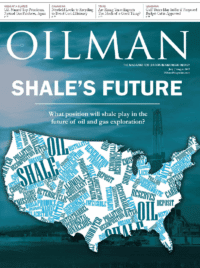It has been a wild ride in the oil and gas market since the OPEC meeting May 25. The price has fluctuated considerably as the OPEC member countries and Russia agreed to cut production again, and this time for nine months. Many analysts expected the agreement that reduced production to 1.8 million barrels a day would, in turn, push the price past $60 per barrel. However, the price has been in decline since the meeting. According to industry analysts, there are several reasons why the price is under pressure. The main reason voiced by many in the industry is the OPEC agreement to reduce production should run through 2018 to make a meaningful impact on supply. Another is the instability in Libya and Nigeria, in which OPEC exempted the two countries from supply reduction, and as a result flooded the market. What is perhaps a minor point, but has impact, is energy investors speculating that the price would increase and are now beginning to unload their investments. Several agencies that monitor supply have also mentioned that global oil inventory has receded much slower than expected, leaving supply above historical levels.
Another major reason for the global price pressure is from U.S. producers increasing production. Most of the production increase is coming from shale drilling, which is booming in many shale plays, mainly the Permian Basin. Since the downturn that began in 2014, oil and gas producers have trimmed expenses, employed technological advances and are utilizing the best properties to drill. As a result, several shale producers indicated they can be profitable at $40 per barrel. The IEA estimates that U.S. crude supply will grow almost 5% on average this year, and nearly 8% in 2018, potentially vaulting ahead of Saudi Arabia in daily output. Despite the low barrel price, many believe our increased production is good for the U.S. oil and gas producer, consumer and overall economy. In this issue of OILMAN, our feature takes a look at shale and how its resurgence has played a pivotal role in the renewal of many communities around the country.
The CEO of U.S. Energy Media, Emmanuel Sullivan is a technical writer who has built up his profile in the oil and gas industry. He lives and works in Houston, where he publishes Oilman and Oilwoman on a bimonthly basis, and Energies quarterly, distributing the magazine to energy thought leaders and professionals throughout the United States and around the world. At a time when technology is rapidly changing, he provides an invaluable service to oil & gas, and renewable energy executives, engineers, and managers, offering them both broad and specific looks at the topics that affect their livelihoods. Sullivan earned his BA in Communications at Thomas Edison State University and his MA in Professional Writing at Chatham University.











